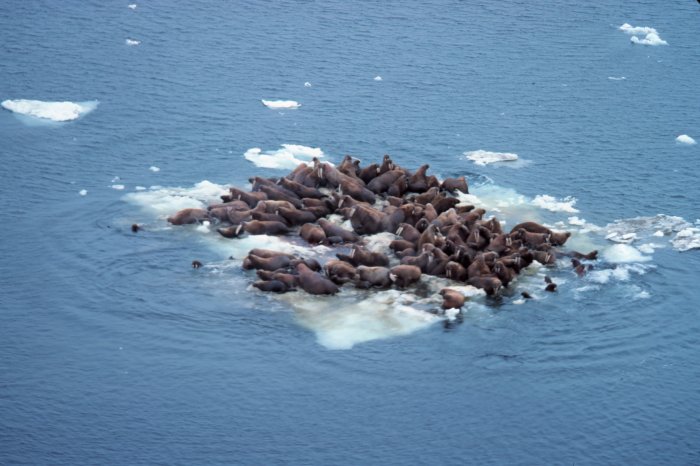What better way to celebrate the holiday season than with a post about all the fabulous marine mammals hanging out near the North Pole? The Arctic hosts a variety of marine mammals including eight species of pinnipeds (several seals, walruses), three cetaceans (bowhead, beluga and narwhal whales) and one fissiped (polar bears). (For me, fissiped is a new term, which turns out to be the scientific name for the group of four-legged, mostly meat-eating mammals that have separated toes. This is an eclectic group including bears, otters, dogs, cats, raccoons and hyenas.)
According to the Encyclopedia of Marine Mammals, most of the Arctic marine mammals have adapted their lives to the expansion and contraction of sea ice. Which as you know, unless you have been living in a cave for the last ten years, isn’t what is used to be. In the Arctic Marine Mammals article authored by John J. Burns it states, “During the period 1979-2006, the average sea ice extent has declined for every month.” So every year since 1979, the amount of ice in December was less than the previous December and so on for every month. For September at the end of summer when the ice is at a minimum, the estimated decline is about 8.6 percent per decade.
Can you imagine losing 8.6 percent of your home every ten years? Granted the Arctic is a huge area and tough to compare to an average home or apartment. But think about it in terms of land mass, if 8.6 percent of California started to disappear every September that could be a serious problem and that’s just in ten years. Then in another ten the state would be missing 17.2 percent and then in another ten it would be up to 25.8 percent! That’s more than a quarter of the state! And yes, the Arctic is bigger than California, but you get the idea. This is serious change happening very fast. Could California adapt to such a massive change in 30 years? Doubtful. The state’s governor and legislators can’t even develop a balanced budget in one year.
This fast change is impacting our Arctic marine mammals in ways that are not fully known by scientists. According to the encyclopedia, some marine mammals like the bowhead whale could benefit and actually has been producing more calves in the last few years. Others like the seals and walruses rely on sea ice to give birth, raise their young and molt and could be facing a lot more trouble. And for everyone who has seen the Disney movie Earth (spoiler alert), it’s tough to forget the polar bear swimming, swimming and swimming looking for food as the sea ice fails to extend out to food sources. Ultimately, the bear collapses from exhaustion after failing to successfully kill a baby walrus for dinner because he’s so tired. And while the movie doesn’t show the last grisly details, the ending is pretty clear.
I didn’t intend to be a downer when I started writing this post, but reading about fast acting change in the Arctic is eye-opening. What does it mean for our Arctic marine mammals? Will they be able to adapt quickly enough to their crazy fast changing environment? And ultimately what does it mean for us?

The truth is not a downer, so no worries there.